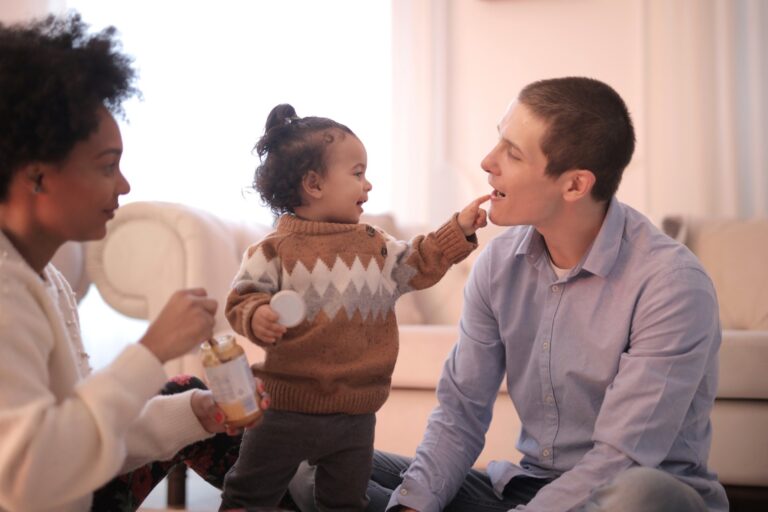Services
Early Intervention

Early Intervention includes preparing children to go to school successfully or to give them skills necessary to be more successful in the school setting
Family and Caregiver Training

The goal for all of our children and families is for the children to be able to transfer the skills they are learning in the center to the home environment. In order to do that, our trained staff will work with parents, siblings and other caregivers that are involved with your child in order to give them the skills necessary to ensure everyone has the concepts and skills that are needed to generalize skills into the home and their community. It is a critical component of Life Track Wellness programming to ensure true success for your child.
Life Skills

While your child is attending LifeTrackWellness Center, skills such as toileting, eating a variety of foods and using utensils, dressing, tolerating waiting and the reduction of problem behaviors are a few of the life skills LTW staff will be working on with your child.
What is Autism?
According to Autism Speaks, “Autism, or autism spectrum disorder, refers to a range of conditions characterized by challenges with social skills, repetitive behaviors, speech and nonverbal communication, as well as by unique strengths and differences.” To make this more understandable, Autism effects a child globally. There are many challenges that children face with Autism which include problem behaviors (restrictive and repetitive behaviors). Behaviors like this can include something as little as only wanting to wear blue shirts, to more aggressive behaviors, such as hitting, kicking, biting and property destruction. Most children with autism are picky eaters and tend to have additional stomach problems. Many children with autism have a co-occurrence of an intellectual disability. This means, language development, potty training, dressing, feeding and other self-help skills are typically significantly delayed.
One of the challenging aspects of trying to understand autism is the fact that it is a spectrum disorder. That means that the symptoms of autism may be less in one child, which you may hear the term “high functioning” and the symptoms in another child are much worse, which is typically referred to as “low functioning”. And then there is everywhere in the middle! Autism is typically detected in children around age two or three. A significant amount of intervention is needed with most children in order to get their skill level up prior to being able to start school. Some of these interventions you may be more familiar with, such as Speech Therapy and Occupational Therapy. Applied Behavior Analysis is another form of intervention that is less common to families new to an Autism diagnosis but is considered the gold standard of interventions according to the United States Surgeon General. There is a significant number of children effected by Autism that will need life-long supports. It is a smaller portion of the Autism population that will grow to live 100% independent.
What is ABA?
Autism Speaks does a fantastic job of explaining Applied Behavior Analysis (ABA). So, I am siting their definitions and research here to help gain more understanding of what the intervention entails. “Applied behavior analysis (ABA) is the use of these techniques and principles to bring about meaningful and positive change in behavior. Behavior analysts began working with young children with autism and related disorders in the 1960s. Early techniques often involved adults directing most of the instruction. Some allowed the child to take the lead. Since that time, a wide variety of ABA techniques have been developed for building useful skills in learners with autism – from toddlers through adulthood.” “A number of completed studies have demonstrated that ABA techniques can produce improvements in communication, social relationships, play, self care, school and employment. These studies involved age groups ranging from preschoolers to adults. Results for all age groups showed that ABA increased participation in family and community activities.
A number of peer-reviewed studies have examined the potential benefits of combining multiple ABA techniques into comprehensive, individualized and intensive early intervention programs for children with autism. “Comprehensive” refers to interventions that address a full range of life skills, from communication and sociability to self-care and readiness for school. “Early intervention” refers to programs designed to begin before age 4. “Intensive” refers to programs that total 25 to 40 hours per week for 1 to 3 years.
These programs allow children to learn and practice skills in both structured and unstructured situations. The “intensity” of these programs may be particularly important to replicate the thousands of interactions that typical toddlers experience each day while interacting with their parents and peers.
Such studies have demonstrated that many children with autism experience significant improvements in learning, reasoning, communication and adaptability when they participate in high-quality ABA programs. Some preschoolers who participate in early intensive ABA for two or more years acquire sufficient skills to participate in regular classrooms with little or no additional support. Other children learn many important skills, but still need additional educational support to succeed in a classroom.
In some studies, researchers compared intensive ABA with less intensive ABA and/or other early intervention or special education programs for children with autism. Generally, they found that children who receive intensive ABA treatment make larger improvements in more skill areas than do children who participate in other interventions. In addition, the parents of the children who receive intensive ABA report greater reductions in daily stress than do parents whose children receive other treatments.”
As you can read, ABA is highly effective for children with Autism. At LifeTrackWellness Center, therapists will use ABA therapy in a 1:1 setting. This means, the children will receive the “intensity” as stated above. All children’s hours are designed for their individual need, but it is very common for all children to receive 30 to 40 hours per week of therapy. Also, as stated above, children are typically in therapy for 1 to 4 years. In my 16 years of experience in the field, it is more common for children to be in therapy for even longer.
Autism Prevalence
The prevalence of Autism in the United States is now 1 in 59. This data was collected in 2014 and we know will increase the next time data is collected. The prevalence in 2014 increased from the number taken in 2012 which was 1 in 68. The first pool of data collected by the CDC in 2000 was 1 in 150. These numbers show that in less than 20 years, Autism has more than doubled in the United States. In April of 2018, the University of Minnesota completed a study on Autism rates in Minnesota and found the prevalence to be 1 in 42. The study also looked at Autism in the Somali community in Minnesota and found the prevalence to be 1 in 26. Unfortunately, the statistics show that Autism is not going away. Quite the opposite seems to be happening.
With the prevalence of Autism on the rise, and rates higher in Minnesota, waiting times for center-based, ABA treatment is very high. Once a child receives a diagnosis, wait times can be anywhere from 6 months to 2 years. There are only a handful of ABA providers in the metro that offer a full-time program. Additionally, there are providers that “age” kids out when they turn 7. This can be very challenging for families because often the child is “aged out” before he/she is ready to go to school. LifeTrackWellness Center will serve kids ages 2 to 10 in our facility. However, long-term plans will include serving kids, young adults and adults.
